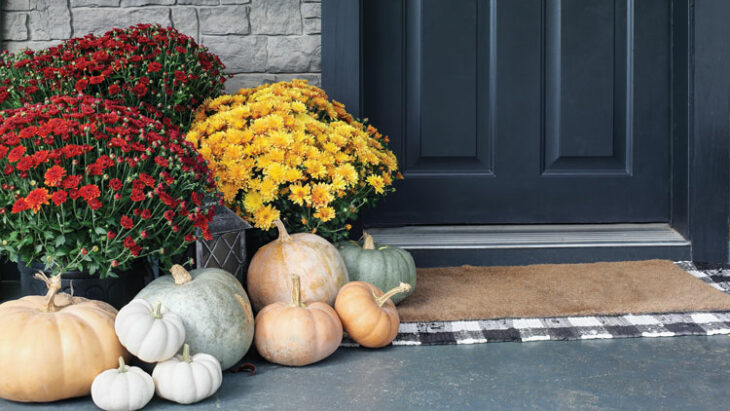Chrysanthemums are the quintessential flower of fall. Who doesn’t remember the huge mums worn by their high school homecoming court? How about the orange and yellow nursery mums adorning many Coast porches each Halloween?
Admittedly, I’ve killed many a potted mum — not intentionally, of course, but from sheer neglect or enthusiasm to keep them alive.
Almost as soon as school starts, nursery chrysanthemums are filling the supermarkets, big box stores and local nurseries. Their availability symbolizes “fall” to many of us; hence, there’s a tendency to purchase them early. Nursery mums have been “forced” to bloom early, allowing them to reach market sooner.
Whenever and wherever you buy your mums, there are hundreds of varieties to choose from, and some types will survive our mild winters here on the Coast — behaving as perennials. In fact, they can be planted outside in the garden to grow and bloom again in subsequent years. Some varieties will only survive until frost, even in our area.

IF YOU’D LOVE TO MOVE YOUR MUMS FROM A FALL PLANTER INTO YOUR GARDEN, CONSIDER THE FOLLOWING:
- Plant a cold-hardy perennial chrysanthemum that’s marked to withstand low temperatures.
- Early spring is the best time to plant mums to give them time to become well established before winter.
- Southerners can enjoy mum blooms in spring and again in fall, as equal days and nights (12 hours each) will cause them to bloom twice.
- Select a planting site in full sun away from large trees and shrubs. Mums require rich, well-draining soil. Standing water will cause the roots to rot.
- If you’re planting mums in pots to beautify your patio or porch, be aware that lights at night from security lamps or streetlights may interfere with blooming.
- Set mums 18-36 inches apart, depending on mature size.
- Plant in the ground the same depth as in the original pot.
- Water and keep them evenly moist.
- If you’re growing mums in pots, make sure there are drain holes. If the container doesn’t have any holes, you’ll have to make some. Mums in pots may need to be watered daily, or even twice a day. Pots dry out very quickly.
- Mums are heavy feeders. A monthly application of a balanced fertilizer is needed for a thriving plant.
- Mulch your mums to conserve moisture and inhibit weeds.
- Pinch back stems to create a bushier plant. When new shoots are 3-4 inches tall, pinch off the top, leaving two to three leaves on the shoot. Continue pinching every two to three weeks until early August, when buds develop.
- Stop fertilizing when flower buds develop.
- Switch to a high-nitrogen fertilizer after buds have set.
- Do not cut back mums in the fall. The dead growth insulates the roots. Cut off dead stems and leaves after the first green shoots emerge in the spring.



